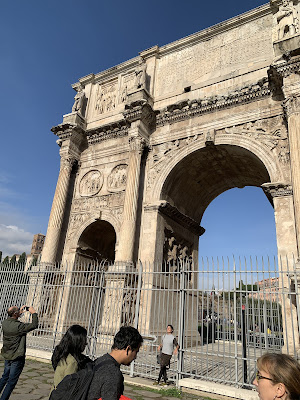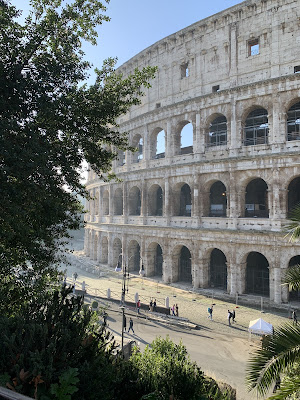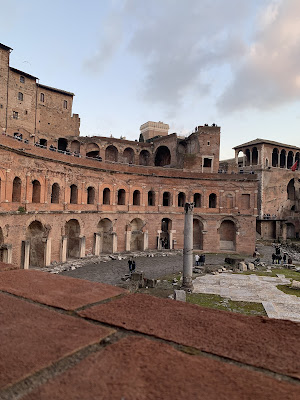So, you can tour most all of America, and not see any human remains. It never crossed my mind that things would be different over there.
We weren’t allowed to take pictures in the Capuchin Crypts, or in the catacombs, but I screenshots a Google search to give you the idea.
This was in the Capuchin Crypts, where their inter sanctuary was decorated with the skeleton remains of over 3,000 monks. There were also mummified remains in the mix.
It was sad seeing the obsession with death that this monk order had, but it was also unique hearing the story of why they were the way they were, and how they were reacting to a wrong teaching of the church. It sounded like a lot of the theological arguments of the church today. One church gets something a little wrong, so another church pendulum swings to a wrong extreme on the other side, and pretty soon you have to totally opposite beliefs, and they’re both out of balance.
The catacombs were incredible. If you’ve read “Martyr of the Catacombs”, or any book with them in, they’re exactly how you imagine them. I understand now why the Christians hiding down there were safe. The Roman’s fear of getting lost down there is no joke! Everything looks the same for miles. I’m so thankful for our guide!
You’ll notice in the picture, that the graves have been dug out, and are empty. This is because tourists used to steal bones, and grave robbers would sell them as “relics” claiming that they had the REAL bone from some Saint. They say if you add up all the bones of some of those saints, they have multiple legs and heads. So, to preserve the rest of the bones, they were removed from the catacombs and placed in church crypts.
We visited a lot of magnificent churches, but many of them had these disturbing glass coffins with what I assumed were wax bodies of “saints” displayed.
I found out later, that some of them, are the original skeletons, just covered in wax, and dressed in the real clothes that belonged to the individual. You could even see the wear on their shoes.
We didn’t get to go to Priscilla’s Catacombs, but we did get to see where the bone’s from Priscilla’s Catacombs were placed. That circle behind me, conceals the crypt where they were placed.
Then, there was Pompeii. The bodies of those who didn’t escape were buried under many feet of ash and rocks. As the decay took place, it left hollowed out crevices. Archeologists were able to fill those cavities with plaster and capture the final moments of those people.
In the background, is the plaster of a teenage boy huddled with his hands over his face trying to breathe in the falling ash and fumes of Mt. Vesuvius.
For the catacombs tour, we entered the catacombs of San Callisto.
This is the plaster of a child buried at Pompeii.
So, I got super excited to see the Catacombs of Priscilla. In America, Priscilla isn’t a super common name, so I assumed this Priscilla was the Biblical Priscilla. The Bible specifically says Priscilla and Aquila came from Rome.
But… these weren’t actually the catacombs of that Priscilla, but another one. A noblewoman whose husband was killed for his faith. She donated some land for these catacombs.
Prisca, is the Latin version of Priscilla, so in the Bible, when Paul is in Rome, he refers to Priscilla as Prisca.
This was the first glass coffin we saw. It was disturbing, and sad seeing candles lit in front of it from people praying. As if a dead person could answer prayers. I’m so thankful that we have a risen savior!
This donkey was buried at Pompeii in 79AD.
And yet another one…
It was cool seeing my name a little more common over there!

















































































